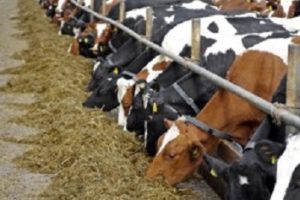The U.S. Court of Appeals for the D.C. Circuit recently agreed to stay its mandate, or order, to require that farms with continuous air releases of hazardous substances—as defined by the Comprehensive Environmental Response, Compensation, and Liability Act (CERCLA) and the Emergency Planning and Community Right-to-Know Act (EPCRA)—file initial notifications of those releases to the National Response Center (NRC).

Reporting of continuous releases had previously been required by the D.C. Circuit by November 15, 2017. The EPA subsequently announced that reporting would not be required until the D.C. Circuit issued a mandate. On November 22, 2017, the court granted the Agency’s request that the mandate be issued on January 22, 2017. Following issuance, the EPA will likely announce a deadline for farms to file notifications with the NRC.
RQs and Continuous Releases
Under CERCLA and EPCRA, facilities must notify the NRC about reportable quantity (RQ) releases. Specifically, a facility that releases a hazardous substance to the atmosphere that exceeds the RQ for that substance within a 24-hour period must report the release to the NRC. However, CERCLA provides a special reduced reporting option for releases of hazardous substances. This relief applies to facilities where releases are “continuous” and “stable in quantity and rate.” For these types of releases, reporting facilities can choose either to (1) report on a per-occurrence basis, or (2) report as a continuous release in accordance with EPA’s continuous release rule (July 24, 1990, FR). Within 30 days of notifying the NRC, a facility must also submit an initial written notification to the EPA regional office for the area where the release occurs.
In 2008, the EPA published a final rule that exempted farms from the RQ requirements. But in April 2017, the D.C. Circuit vacated the exemption, setting the stage for the continuous release mandate.
NH3 and H2S
EPA’s request for a stay of the mandate is largely motivated by the absence of an accepted formula for estimating emissions from farms and the fact that most farmers have no experience making such estimates. Ammonia (NH3) and hydrogen sulfide (H2S) released from manure storage and handling operations are the primary air hazardous substances at farms. NH3 and H2S each have RQs of 100 pounds. In late October, the EPA published interim guidance farmers may use to estimate their emissions as well as reporting forms to simplify notifications.
Requirement Never Intended for Farms
The reporting postponement was welcomed by farming organizations, who agree with the rationale behind EPA’s 2008 exemption. At that time, the Agency said it rarely, if ever, enforced release notification requirements at farms because reports that such releases were harming people were so uncommon that the Agency could not envision that it would ever make use of such notifications.
“Cattle producers have one more thing for which to be thankful this Thanksgiving weekend,” said Craig Uden, president of the National Cattlemen’s Beef Association, in a statement. “Agricultural operations were never intended to be regulated by these laws, so this court-ordered stay until January 22 is very welcome news. We’ll use this additional time to continue working on the introduction of stand-alone legislation to fix this issue, and we’ll also promote corrective language in the appropriations process.”
More information on RQs, continuous releases, and reporting provisions for farms is available here.
